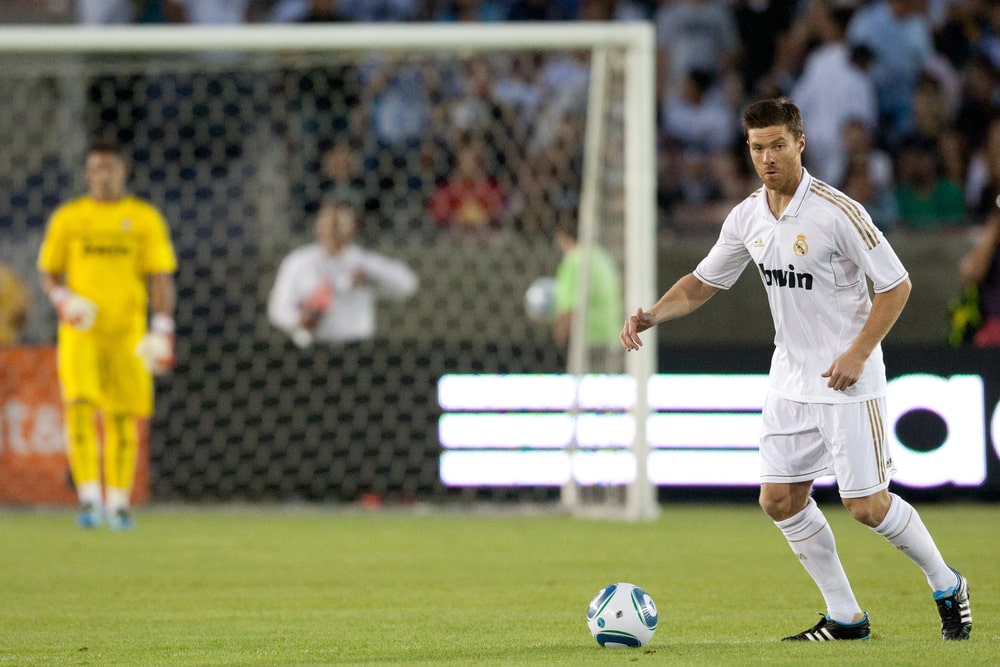The game FIFA, now rebranded as EA Sports FC, serves not only as a fun pastime but also as an educational resource for football enthusiasts around the globe. It has familiarized many players with the various positions and associated terminology in soccer.
In a previous article, we examined the history and key roles of the CAM (Central Attacking Midfielder) position. Now, we shift our focus to another crucial role well-known to fans of EA Sports FC: the Cdm Soccer(Central Defensive Midfielder). This article will clarify what Cdm Soccer means, explore the essential skills and physical attributes of a typical CDM, and discuss the primary responsibilities of players occupying this role. We will also shine a light on some of the most accomplished CDMs in professional soccer history.
What Is The CDM Position In Soccer?
The CDM, or Central Defensive Midfielder, occupies a crucial role centrally on the pitch, positioned just ahead of the defensive line. This position is primarily focused on defensive duties, with key responsibilities that include disrupting opposing attacks, providing coverage for defenders, and facilitating ball distribution to more advanced teammates.
Unlike other midfield positions that may emphasize offensive play, the CDM’s primary mission is to protect the backline, making it an essential role for teams aiming to maintain balance and control throughout the match. By effectively executing these defensive responsibilities, CDMs play a pivotal role in shaping the overall dynamics of the game.
CDM Soccer: Position Key Roles And Responsibilities

The Central Defensive Midfielder (CDM) is one of the most challenging roles on the soccer field. CDMs must not only focus on defensive duties by shielding the defenders behind them, but they also play a crucial role in transitioning the ball forward and initiating attacks from deep in midfield. Their responsibilities are diverse and integral to the team’s overall strategy, as outlined below.
Defensive Stability
The primary objective for a Cdm Soccer is to ensure defensive stability. They act as a protective barrier for the back line, adding an essential layer of defense in areas where crafty attacking midfielders can exploit space. To provide this support effectively, CDMs must possess physical strength, aggression in challenges, and a keen tactical awareness to anticipate opposition movements and prevent opponents from receiving the ball in dangerous zones.
Zonal Marking Expertise
An important aspect of the CDM’s role involves marking space rather than individual players. Most modern teams utilize a zonal marking strategy, which emphasizes covering specific areas of the pitch and anticipating where the opposition’s passes will go. This approach allows CDMs to make crucial interceptions and plug gaps in the midfield, significantly impacting the flow of the game. Positioned in such a pivotal area, their ability to read the game and manage space is vital to disrupting the opponent’s attacking play.
Essential Skills For A Central Defensive Midfielder (CDM)
Tackling
A proficient Cdm Soccer must excel in tackling, demonstrating the ability to dispossess opponents skillfully while avoiding fouls. This skill is critical for maintaining possession and disrupting the opposition’s rhythm.
Interception
Effective game reading and the ability to anticipate passes are vital for a CDM. By recognizing potential threats early, they can intercept the ball and thwart opposition attacks before they gain momentum.
Passing
A Cdm Soccer needs to be adept at both short and long-range passing. Accurate distribution is essential for transitioning the play from defense to attack, ensuring that the team maintains fluidity in their offensive movements.
Positioning
Maintaining disciplined positioning on the field is crucial for a CDM. Proper positioning allows them to effectively shield the defense and respond to threats, making it easier to support teammates in both defensive and offensive scenarios.
Stamina
Given the demanding nature of the role, a Cdm Soccer must possess high stamina and fitness levels. They often cover significant ground during matches, making endurance a key component of their effectiveness on the field.
Essential Attributes For An Effective Central Defensive Midfielder (CDM)

To thrive in the role of a Central Defensive Midfielder, a player needs more than just a keen understanding of soccer tactics. This position demands a unique blend of physical and mental attributes that contribute to overall success on the pitch.
Athleticism Beyond Muscle
Modern CDMs must possess more than just brute strength. The role has evolved, emphasizing the importance of fascia in athletic performance. This means that some players may rely more on their fascia-driven athleticism, while others may be more muscle-oriented. Understanding how these elements interplay can enhance a player’s effectiveness in their role. For a deeper dive into fascia’s significance, consider reading articles on fascia training and how to restore full foot function.
Physical Strength
As the team’s anchor, a CDM must demonstrate both strength and coordination. They need to be capable of dispossessing opponents who attempt to break through the defensive line. Athletic strength is not solely about size; it’s about how well a player can coordinate their movements. A prime example is N’Golo Kanté, who stands at 1.68 meters (5 feet 6 inches) yet consistently challenges larger players due to his exceptional coordination and strength, which are influenced more by his fascial system than just muscle mass.
Speed and Agility
CDMs must be quick—physically, mentally, and tactically—to cover vast areas of the field swiftly. Their ability to transition rapidly from defense to attack, or vice versa, is critical. Speed and agility enable them to close down spaces, intercept passes, and challenge opponents while maintaining their balance. Kanté is again a notable example, renowned for his pace and relentless work rate, while Sergio Busquets may not be the fastest physically but compensates with his tactical acumen.
Tactical Acumen
A high soccer IQ is essential for a CDM. This player must have a comprehensive understanding of the game, as they have a panoramic view of the field. Effective communication with teammates is vital to ensure proper positioning relative to the ball and each other.
Mental Resilience
The role of a CDM also requires significant mental toughness. Players must remain focused under pressure, make swift decisions amidst chaos, and maintain composure after errors. A resilient CDM learns from mistakes rather than dwelling on them, using setbacks as motivation for improvement. They need to be able to quickly shift focus to the next play.
Contribution to Attacking Plays
While primarily defensive, a CDM plays a crucial role in creating scoring opportunities. It’s essential for them to take calculated risks and distribute the ball forward to more advanced players, including midfielders, strikers, and wingers. Balancing defensive responsibilities with the ability to initiate attacks is key to a successful CDM’s contribution to the team’s overall performance.
Training Strategies For Aspiring Central Defensive Midfielders (CDMs)

To excel in the Central Defensive Midfielder position, players should focus on drills that improve their defensive skills, situational awareness, and ball distribution abilities. Here are some effective training methods:
Tackling Drills
Engage in one-on-one tackling exercises to enhance your timing and technique. This practice will enable you to effectively dispossess opponents while minimizing the risk of fouls.
Positional Awareness
Take part in tactical drills that emphasize the importance of maintaining team shape. Focus on recognizing the right moments to pressure opponents versus when to hold your position and offer defensive support.
Passing Drills
Practice various passing techniques, including both short, quick passes and longer balls. Building versatility in your passing will enhance your effectiveness as a playmaker in midfield.
Fitness Regimen
Incorporate stamina-enhancing exercises, such as interval running, into your training routine. These workouts are vital for maintaining high energy levels throughout matches, ensuring you remain a valuable contributor on the field for the entire game.
The Greatest Central Defensive Midfielders In Football History
Claude Makélélé
When José Mourinho made his impactful entry into Chelsea during the mid-2000s, one player he heavily relied on at the heart of his midfield was Claude Makélélé. Renowned for his defensive prowess, tenacity, and exceptional game awareness, the French international excelled in the CDM role. His versatility allowed more attacking-minded players, like Frank Lampard, to thrive within Mourinho’s tactical setup.
Sergio Busquets
Barcelona and Spanish football icon Sergio Busquets has redefined the CDM position. Unlike the traditional view of a combative midfielder, Busquets possesses a tall, slender frame and an elegant playing style. His exceptional skills—ranging from precise passing to creative vision—enable him to control the game from the midfield base. Busquets excels at neutralizing opposition threats and orchestrating plays, solidifying his status as one of the finest to ever hold the central defensive midfielder role.
Xabi Alonso
Currently making headlines as the head coach of Bayer Leverkusen in the Bundesliga, Xabi Alonso was once celebrated as one of the premier central midfielders of the 21st century. Known for his strength, elegance, and outstanding passing skills, Alonso combined technical ability with a deep tactical understanding, making him an influential figure on the pitch and paving the way for his coaching success.
Lothar Matthäus
German football legend Lothar Matthäus boasts an impressive record of five World Cup appearances, with a career that spanned from 1982 to 2000. Throughout his time, he achieved remarkable success both internationally and at the club level, including a World Cup title, a European Championship, and seven Bundesliga championships with Bayern Munich. Matthäus’ legacy as one of the greatest midfielders is firmly established.
Roy Keane
The legendary Irish midfielder Roy Keane is synonymous with success at Manchester United, where he clinched seven Premier League titles, four FA Cups, and a Champions League trophy. Known for his aggressive playing style, relentless work rate, and sharp tactical awareness, Keane epitomizes the classic old-school CDM, playing a pivotal role in defining the position during the 1990s and early 2000s.
Patrick Vieira
During his time in the Premier League, Patrick Vieira emerged as a technically gifted and athletic player who was instrumental in Arsenal’s title challenges under Arsène Wenger. With exceptional dribbling, precise passing, and remarkable physical stamina, Vieira stands out as one of the greatest central defensive midfielders in football history.
Final Thoughts
The role of a Central Defensive Midfielder (CDM) is crucial for any successful soccer team, as it combines defensive solidity with the ability to transition play effectively. A well-rounded Cdm Soccer not only shields the defense but also links the back line with the midfield and attack, making them integral to the team’s overall performance. Aspiring CDMs should focus on developing essential skills, tactical awareness, and physical attributes through dedicated training. By understanding their responsibilities and honing their craft, they can significantly impact their team’s success on the field.
FAQs
1. What does CDM stand for in soccer?
CDM stands for Central Defensive Midfielder, a key position responsible for defensive duties and linking play between defense and attack.
2. What are the primary responsibilities of a CDM?
A CDM’s main duties include intercepting passes, winning back possession, maintaining positional discipline, and initiating attacks from a defensive position.
3. What skills are essential for a successful CDM?
Key skills for a CDM include tackling, interception, accurate passing, effective positioning, and high stamina to cover large areas of the field.
4. Can a CDM contribute to the attack?
Yes, while primarily defensive, a CDM can create goal-scoring opportunities by advancing the ball to more attacking players.
5. Who are some of the best CDMs in soccer history?
Notable CDMs include Claude Makélélé, Sergio Busquets, Xabi Alonso, Lothar Matthäus, Roy Keane, and Patrick Vieira, each known for their unique contributions to the role.
Keep up-to-date with breaking news and updates on Americanews





